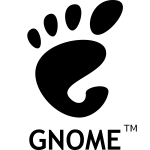GNOME/GTK: GUADEC, COSCUP, Themes and WebKitGTK+

-
[Video] GUADEC 2017 - Richard Brown - Resurrecting dinosaurs, what could possibly go wrong
GUADEC is GNOME's annual user and developer European conference. This year GUADEC took place in the city of Manchester, UK with 45 talks and more than 200 attendees. Thanks this year's GUADEC sponsors for making the conference happen. For more information see: http://2017.guadec.org
-
Post-GUADEC distractions
We finally picked it up this year. I produced a better cairo patch, which we reviewed, fixed and merged during the unconference days at GUADEC. Behdad also wrote and merged the necessary changes for fontconfig, so we can have an “emoji” font family, and made pango automatically choose that font when it finds Emoji.
After guadec, I worked on the input side in GTK+. As a first result, it is now possible to use Control-Shift-e to select Emoji by name or code.
-
My first (and definitely not the last) GUADEC!
I recently attended GNOME Users and Developers European Conference (GUADEC) 2017 held in Manchester, UK. It was my first time in the UK and my first time at a conference and needless to say, I had a wonderful time.
[...]
Lots of social events and fun activities were organised. The GNOME 20th Anniversary party was one of the best parties I’ve been to yet.
-
Report for COSCUP 2017
As a GNOME Foundation member, together with Bin Li, we have a task to promote GNOME and collaborate with Local Free Desktop community in this COSCUP.
-
Shipping PKCS7 signed metadata and firmware
-
Plano Another Flat Theme For Gnome And Xfce Desktop
There are many flat themes available for Linux desktops, you may have favorite one also. Plano another flat theme specially designed for Gnome and Xfce desktops. It is compatible with Gtk 3.24/3.22/3.20 versions, if you are using distribution other than Ubuntu/Linux Mint then download zip file directly from theme page and install it in this location "~/.themes" or "/usr/share/themes". There is also theme for Gnome Shell which can go along with its Gtk version. If you find any kind of bug or issue within this theme then report it to creator and hopefully he will fix it soon.
-
Vimix Gtk Themes Available in Dark and Light Variants for Ubuntu/Linux Mint
There isn't much theme development going on for latest Ubuntu release since it requires theme creator to build their theme from scratch for new GTK versions, it seems development almost went away but there are still people who are giving their free time just to make your desktop elegant, make sure to support them as well. Vimix GTK themes available in dark and light version and for GTK 3.20/3.22 there are more variants which means you get more themes on latest 16.10 desktop. It is a flat Material Design theme designed for GTK 3, GTK 2 and Gnome Shell based on Flat-Plat theme, and these themes are compatible with most of the desktop environments such as Unity, Gnome, Mate, Cinnamon, Xfce, Budgie and so on. If you find any kind of bug or issue within this theme then report it to creator via linked page. Shadow and Papirus icons used in the following screenshots. You can use Unity Tweak Tool, Gnome-tweak-tool.
-
The coming WebKitGTK+ 2.4 apocalypse
It is well understood that old and unmaintained software tends to be a breeding ground for security problems. These problems are never welcome, but they are particularly worrying when the software in question is a net-facing tool like a web browser. Standalone browsers are (hopefully) reasonably well maintained, but those are not the only web browsers out there; they can also be embedded into applications. The effort to do away with one unmaintained embedded browser is finally approaching its conclusion, but the change appears to have caught some projects unaware.
In early 2016, Michael Catanzaro sounded the alarm about security issues with the widely used WebKitGTK+ browser engine. At the time, security issues were turning up in WebKitGTK+ with great regularity, but nobody was calling them out as such; as a result, they were not getting CVE numbers and distributors were not bothering to ship updates. That created a situation where Linux desktop systems were routinely running software that was known to have security issues that, in many cases, could be exploited via a hostile web page or HTML email attachment.
-

- Login or register to post comments
 Printer-friendly version
Printer-friendly version- 3248 reads
 PDF version
PDF version
More in Tux Machines
- Highlights
- Front Page
- Latest Headlines
- Archive
- Recent comments
- All-Time Popular Stories
- Hot Topics
- New Members
digiKam 7.7.0 is released
After three months of active maintenance and another bug triage, the digiKam team is proud to present version 7.7.0 of its open source digital photo manager. See below the list of most important features coming with this release.
|
Dilution and Misuse of the "Linux" Brand
|
Samsung, Red Hat to Work on Linux Drivers for Future Tech
The metaverse is expected to uproot system design as we know it, and Samsung is one of many hardware vendors re-imagining data center infrastructure in preparation for a parallel 3D world.
Samsung is working on new memory technologies that provide faster bandwidth inside hardware for data to travel between CPUs, storage and other computing resources. The company also announced it was partnering with Red Hat to ensure these technologies have Linux compatibility.
|
today's howtos
|









.svg_.png)
 Content (where original) is available under CC-BY-SA, copyrighted by original author/s.
Content (where original) is available under CC-BY-SA, copyrighted by original author/s.

Recent comments
1 year 11 weeks ago
1 year 11 weeks ago
1 year 11 weeks ago
1 year 11 weeks ago
1 year 11 weeks ago
1 year 11 weeks ago
1 year 11 weeks ago
1 year 11 weeks ago
1 year 11 weeks ago
1 year 11 weeks ago